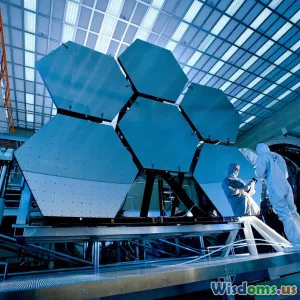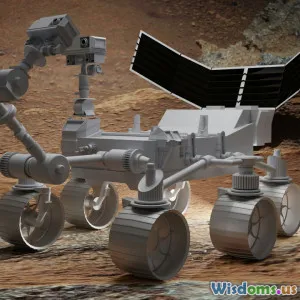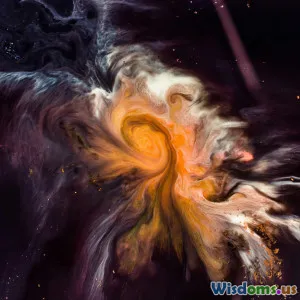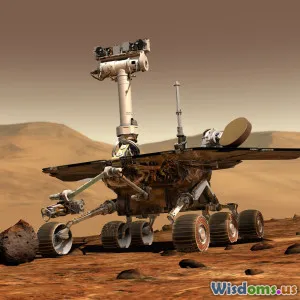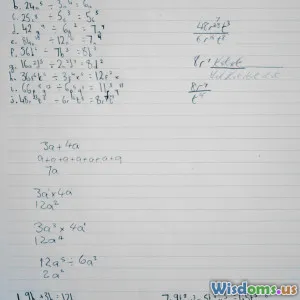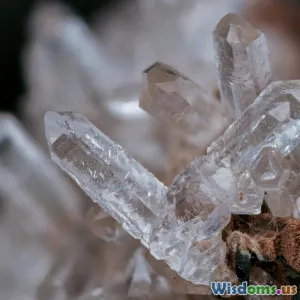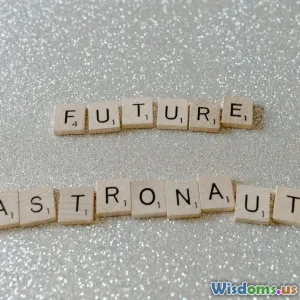
Navigating the Asteroid Belt
7 min read Explore the fascinating world of the asteroid belt, its formation, significance, and how we navigate through this cosmic region. (0 Reviews)
Navigating the Asteroid Belt
The asteroid belt is a fascinating region of space located between the orbits of Mars and Jupiter. It is home to millions of rocky bodies, remnants from the early solar system. Understanding this region is crucial not only for space exploration but also for gaining insights into the solar system's history and the processes that govern planetary formation.
What is the Asteroid Belt?
The asteroid belt is a circumstellar disc that contains a large number of irregularly shaped bodies known as asteroids. These asteroids vary greatly in size, from the small boulders measuring just a few meters across to the dwarf planet Ceres, which spans about 940 kilometers (584 miles) in diameter. The total mass of the asteroid belt is estimated to be only about 4% that of the Moon, making it relatively small compared to other celestial bodies.
Formation of the Asteroid Belt
The origin of the asteroid belt can be traced back to the early solar system. Around 4.6 billion years ago, the Sun and the planets formed from a rotating cloud of gas and dust. As matter coalesced to form planets, some material failed to form a planet, likely due to the gravitational influence of nearby Jupiter. This prevented the smaller bodies from accumulating into a larger planet, leaving behind a vast collection of rocks and debris.
Composition of the Asteroids
Asteroids in the belt are composed of various materials, primarily rock and metal. They can be classified into three main types:
- C-type (carbonaceous): These are the most common and contain a high percentage of carbon and are thought to be similar to the primordial material from which the solar system formed.
- S-type (silicaceous): These asteroids are made up of silicate minerals and metallic iron, making them somewhat stony in nature.
- M-type (metallic): Less common, these asteroids are made up predominantly of metallic iron and nickel.
Understanding the composition of asteroids provides insights into the conditions of the early solar system and the processes that led to planet formation.
Navigating the Asteroid Belt
Challenges of Navigation
Navigating the asteroid belt presents unique challenges for space missions due to the vast distances involved and the relative motion of the asteroids. Early spacecraft relied heavily on mathematical models and observations to plot safe trajectories. Asteroids can be unpredictable, and their orbits can change due to gravitational interactions with one another or with larger celestial bodies.
Techniques for Safe Passage
- Trajectory Planning: Spacecraft navigation relies on precise calculations of trajectories. Scientists utilize gravitational assists and carefully timed maneuvers to navigate through the asteroid belt safely.
- Real-time Tracking: Advanced telescopes and radar systems allow scientists to track the positions and movements of asteroids in real-time, providing critical data for mission planning.
- Collision Avoidance Systems: Modern spacecraft are equipped with sophisticated software that can automatically alter their course if a potential collision with an asteroid is detected.
Notable Missions Through the Asteroid Belt
Several space missions have successfully navigated the asteroid belt, each contributing to our understanding of these celestial bodies:
- Pioneer 10: Launched in 1972, it was the first spacecraft to travel through the asteroid belt, paving the way for future exploration.
- Voyager 1 and 2: These iconic missions provided valuable data and images of the outer planets and their moons while passing through the asteroid belt.
- Dawn Mission: Launched in 2007, it orbited two of the largest bodies in the asteroid belt, Vesta and Ceres, offering unparalleled insights into their composition and history.
The Importance of the Asteroid Belt
The asteroid belt is not just a collection of rocks; it holds significant scientific value. Studying asteroids can help us:
- Understand Solar System History: By analyzing the composition and structure of asteroids, scientists gain insights into the conditions and materials present during the solar system's formation.
- Prepare for Planetary Defense: Understanding the dynamics of asteroids is crucial for developing strategies to protect Earth from potential impacts.
- Explore Resources for Future Missions: Asteroids may harbor valuable resources, including water and metals, which could be utilized in future space missions.
Conclusion
Navigating the asteroid belt is a complex but essential endeavor in the field of space exploration. As we continue to send missions into this intriguing region, our understanding of the solar system's history and its potential for resources will grow. With advancements in technology and navigation techniques, the asteroid belt will remain a focal point for scientific discovery and exploration in the years to come.
Whether you are a space enthusiast, a budding astronomer, or simply curious about the cosmos, the asteroid belt offers a glimpse into the primal forces that shaped our celestial neighborhood.
Rate the Post
User Reviews
Popular Posts










